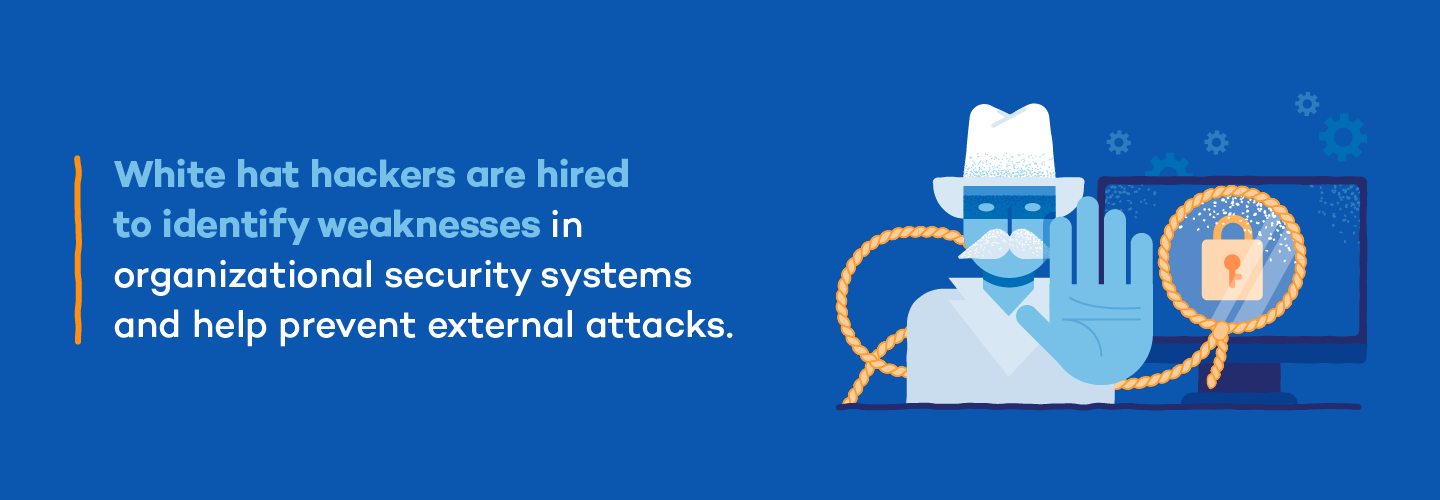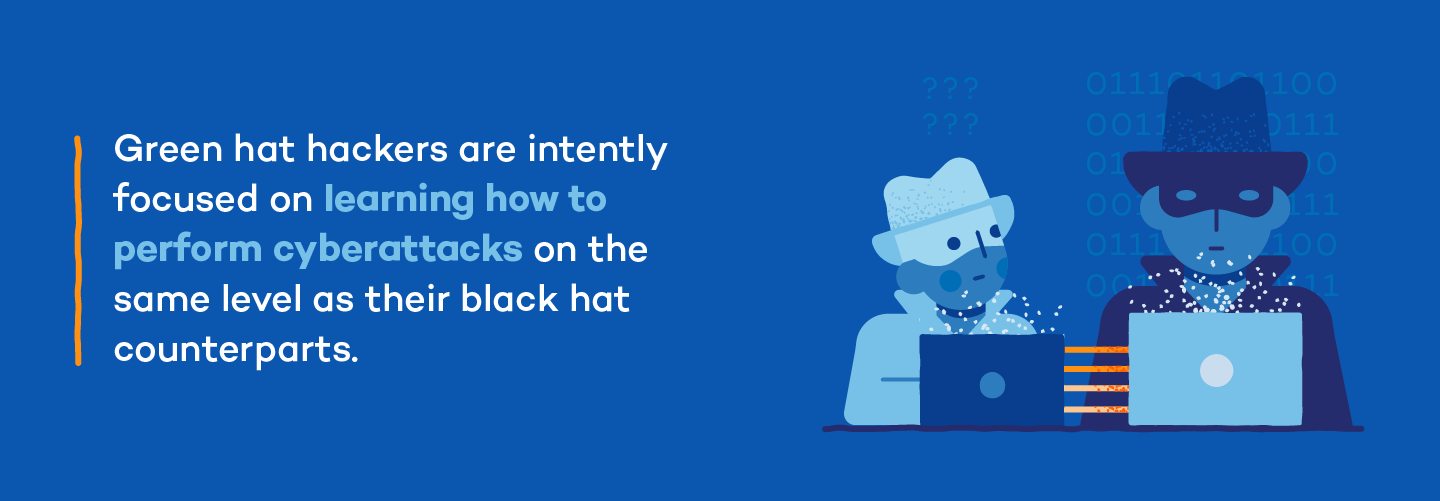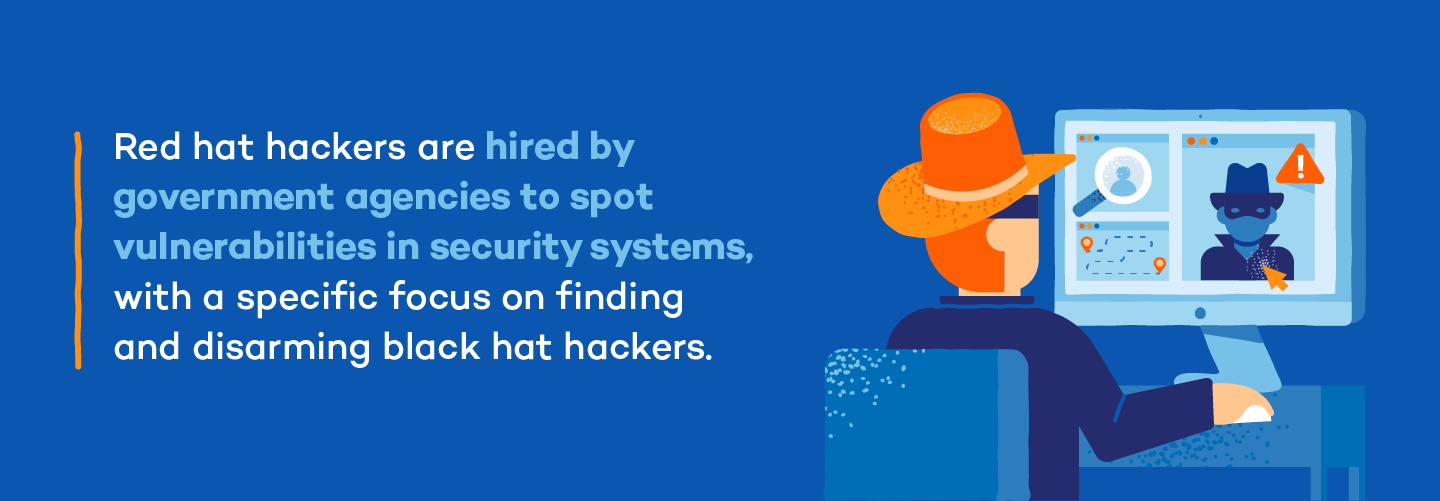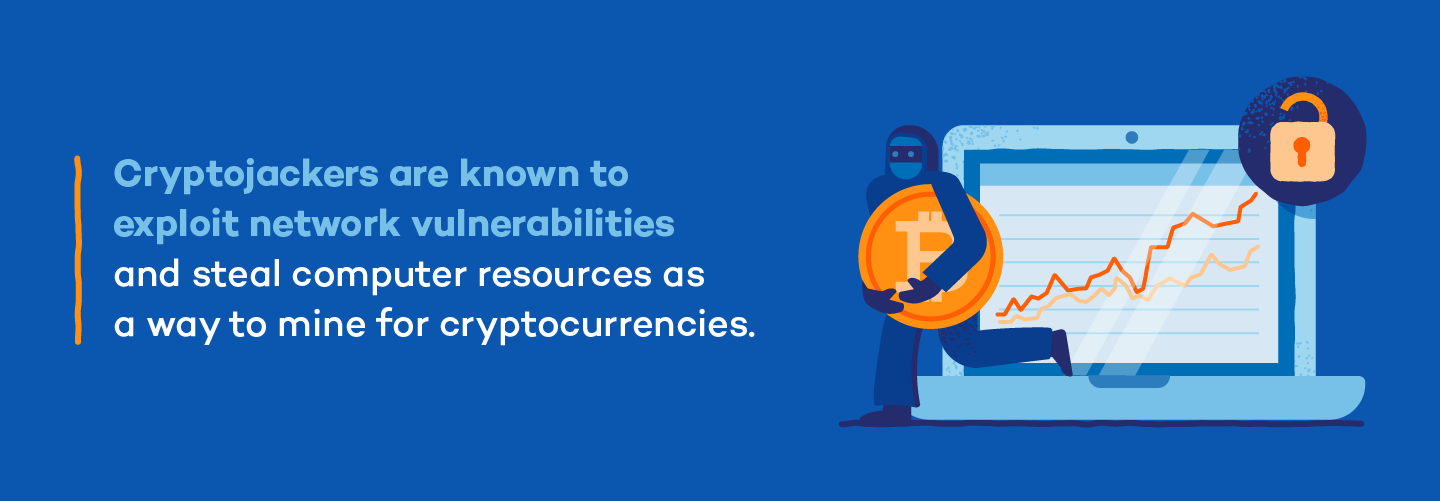Technology has evolved rapidly in the last two decades, bringing about new innovations and tools to help us navigate our tech-driven world. While much of this technological evolution has resulted in tools that help us work, live and navigate modern life with more ease, technology has also opened a widening window of security vulnerabilities that cybercriminals love to exploit.
Hackers — and the malware they use in their crimes — have also evolved, and the methods they use to carry out their attacks have become increasingly sophisticated. Today’s modern-day hackers are nothing short of skilled professionals, and they fall into a few different categories based on their motives and how they perform their attacks.
In fact, not all hackers are criminals — some are actually hired to stop criminals in their tracks. Read on for a breakdown of 14 types of hackers to watch out for.
1. Black Hat: Criminal Hackers
A black hat hacker is a cybercriminal who breaks into computer systems with malicious or criminal intent. Black hat hackers are probably what you think of when you picture a typical hacker or cybercriminal. Their advanced technical knowledge and ability to navigate the cybersecurity landscape is what makes them so skilled in carrying out their attacks. They go out of their way to find vulnerabilities in computer systems and software, which they exploit for financial gain or other malicious purposes.
These hackers can do serious harm to individuals and organizations alike by stealing sensitive or personal data, compromising entire computer systems, or altering critical networks.
Motives: to profit from data breaches
Most at risk: organizations, which hackers typically target to steal sensitive data that can compromise a business financially.
2. White Hat: Authorized Hackers
Similar to black hat hackers, white hat hackers are cybersecurity experts who use their skills to find vulnerabilities in organizational networks and computer systems. The key difference between them, however, is that white hat hackers are authorized to hack these systems to spot security vulnerabilities before a criminal hacker can.

Typically hired by governments or large businesses, white hat hackers identify and fix loopholes or weaknesses found in organizational security systems to help prevent an external attack or data breach.
Motives: help businesses prevent cybersecurity attacks
Most at risk: criminal hackers
3. Gray Hat: “Just for Fun” Hackers
A gray hat hacker is a cybersecurity expert who finds ways to hack into computer networks and systems but without the malicious intent of a black hat hacker. Typically, they engage in hacking activities for the pure enjoyment of finding gaps in computer systems, and they might even let the owner know if they find any weak points. However, they don’t always take the most ethical route when doing so — they may penetrate systems or networks without the owner’s permission (even though they aren’t trying to cause any harm).
Motives: personal enjoyment
Most at risk: anyone who doesn’t want unauthorized access to their systems and networks
4. Green Hat: Hackers in Training
A green hat hacker is someone who is new to the hacking world but is intently focused on increasing their cyberattack skills. They primarily focus on gaining knowledge of how to perform cyberattacks on the same level as their black hat counterparts. Their main intent is to eventually evolve into a full-fledged hacker, so they spend their time looking for learning opportunities from more experienced hackers.

Motives: to learn how to become an experienced hacker
Most at risk: no one (yet)
5. Blue Hat: Authorized Software Hackers
Blue hat hackers are hired by organizations to bug-test a new software or system network before it’s released. Their role is to find loopholes or security vulnerabilities in the new software and remedy them before it launches.
Motives: to identify vulnerabilities in new organizational software before it’s released
Most at risk: criminal hackers
6. Red Hat: Government-Hired Hackers
Red hat hackers are hired by government agencies to spot vulnerabilities in security systems, with a specific focus on finding and disarming black hat hackers. They’re known to be particularly ruthless in their hunt for black hat criminals, and typically use any means possible to take them down. This often looks like using the same tactics as black hat hackers and using those methods against them — using the same malware, viruses and other strategies to compromise their machines from the inside out.

Motives: to find and destroy black hat hackers
Most at risk: black hat hackers
7. Script Kiddies: Ametuer Hackers
Script kiddies are amateur hackers who don’t possess the same level of skill or expertise as more advanced hackers in the field. To make up for this, they turn to existing malware created by other hackers to carry out their attacks. Unlike green hat hackers who are eager to learn hacking techniques, script kiddies are more interested in buying or downloading existing tools for hacking.
Motives: to cause disruption
Most at risk: organizations with unsecured networks and systems
8. State/Nation Sponsored Hackers: International Threat Prevention Hackers
State/nation sponsored hackers are appointed by a country’s government to gain access to another nation’s computer systems. They use their cybersecurity skills are used to retrieve confidential information from other countries in preparation for a potential upcoming threat or attack and to keep a pulse on sensitive situations that could pose a threat in the future. These types of hackers are hired solely by government agencies.
Motives: to monitor and prevent international threats
Most at risk: international hackers and criminals
9. Malicious Insider: Whistleblower Hackers
Malicious insider hackers are individuals who employ a cyberattack from within the organization they work for. Also known as whistleblowers, their motivation for attack can vary from acting on a personal grudge they have against someone they work for to finding and exposing illegal activity within the organization.
Motives: to expose or exploit an organization’s confidential information
Most at risk: internal executives and business leaders
10. Hacktivists: Politically Motivated Hackers
A hacktivist is someone who hacks into government networks and systems to draw attention to a political or social cause—hence why the name “hacktivist” is a play on the word “activist.” They use hacking as a form of protest, retrieving sensitive government information and using it for political or social purposes.
Motives: to shed light on an alarming social or political cause (or to make a political or ideological statement)
Most at risk: government agencies
11. Cryptojackers: Cryptocurrency Mining Hackers
Cryptojackers are known to exploit network vulnerabilities and steal computer resources as a way to mine for cryptocurrencies. They spread malware in a variety of ways, often by planting infectious viruses across the web. These viruses and ransomware-like tactics help them deploy malicious code on victims’ systems, which work quietly in the background without the victims’ knowledge. Once the code is planted, it sends the results back to the hacker.

Cryptojackers are tough to spot, since the malicious code can go undetected for a long time. Since their motive isn’t to steal victims’ data, but rather to use their system as a vehicle for cryptocurrency mining, it’s difficult to trace the source of the infection once it’s discovered.
Motives: cryptocurrency mining
Most at risk: any individual or organization with unsecured networks
12. Gaming Hackers: Hackers of the Gaming World
A gaming hacker is someone who focuses their hacking efforts on competitors in the gaming world. With the gaming industry booming, it’s no surprise that its own specialized category of gaming hackers have emerged as a result. Professional gamers might spend thousands of dollars on high-performance hardware and gaming credits, and hackers typically carry out their attacks in an attempt to steal competitor’s credit caches or cause distributed denial-of-service (DDoS) attacks to take them out of the game.
Motives: to compromise gaming competitors
Most at risk: high-profile gamers
13. Botnets: Large-Scale Hackers
Botnet hackers are malware coders who create bots to perform high-volume attacks across as many devices as possible, typically targeting routers, cameras and other Internet of Things (IoT) devices. The bots operate by looking for unsecured devices (or devices that still have their default login credentials intact) to plant themselves in. Botnets can be used directly by the hacker who created them, but they’re also frequently available for purchase on the dark web for other hackers to take advantage of.
Motives: to compromise a high volume of network systems
Most at risk: individuals with unsecured routers and WiFi-connected devices
14. Elite Hackers: The Most Advanced Hackers
Elite hackers are the cream of the crop in the world of cybercriminals, and are considered to be the most skilled hackers in their field. They’re often the first ones to discover cutting-edge attack methods, and are known to be the experts and innovators in the hacking world. They can use their skills for black hat, white hat or any other type of hacking.
Motives: to perform advanced cyberattacks on organizations and individuals
Most at risk: high-revenue corporations
Types of Hackers FAQ
Still have questions about different types of hackers? We answer them below.
What Are the Three Main Types of Hackers?
The three main types of hackers are black hat hackers, white hat hackers and gray hat hackers.
What’s the Difference Between White, Black and Gray Hat Hackers?
The difference between white, black and gray hat hackers lies in their motives. White hat hackers use their hacking skills for good by proactively finding system vulnerabilities before cybercriminals exploit them. Black hat hackers use their skills for malicious purposes, usually for financial gain. As the name might suggest, gray hat hackers engage in hacking activities purely for fun — without good or bad intent.
How Does Hacking Work?
Hackers use various methods to carry out their goal of finding (and often exploiting) vulnerabilities in a computer system or network. They can:
- Use social engineering tactics or brute force attacks to gain unauthorized access to personal information like usernames and passwords, which they can then exploit for financial or personal gain
- Use malicious code or programs to infiltrate a user’s device and deploy malware
- Take advantage of open, unsecured networks to gain access to the devices on those networks
- Intercept emails to gain access to sensitive information
- Install monitoring software to log keystrokes and capture login credentials, credit card numbers and other sensitive data
The constant evolution of today’s cyberscape means an ever-increasing amount of information is available online, and there are countless types of hackers looking to exploit it. While the intent of every hacker is different, the danger they pose to your data remains the same. One of the simplest steps you can take to keep hackers at bay and defend against a potential attack is to make sure you’re equipped with a reliable antivirus.





